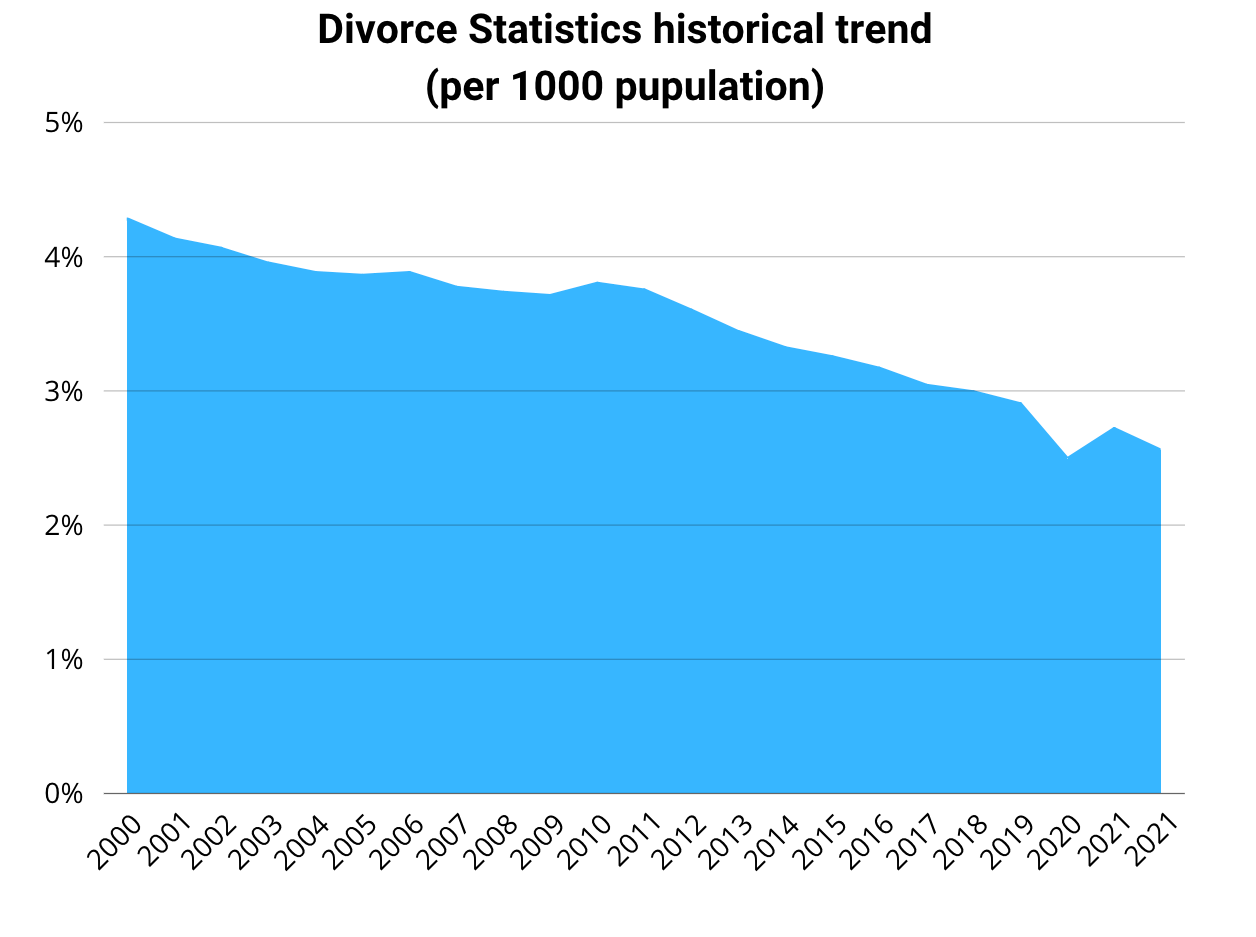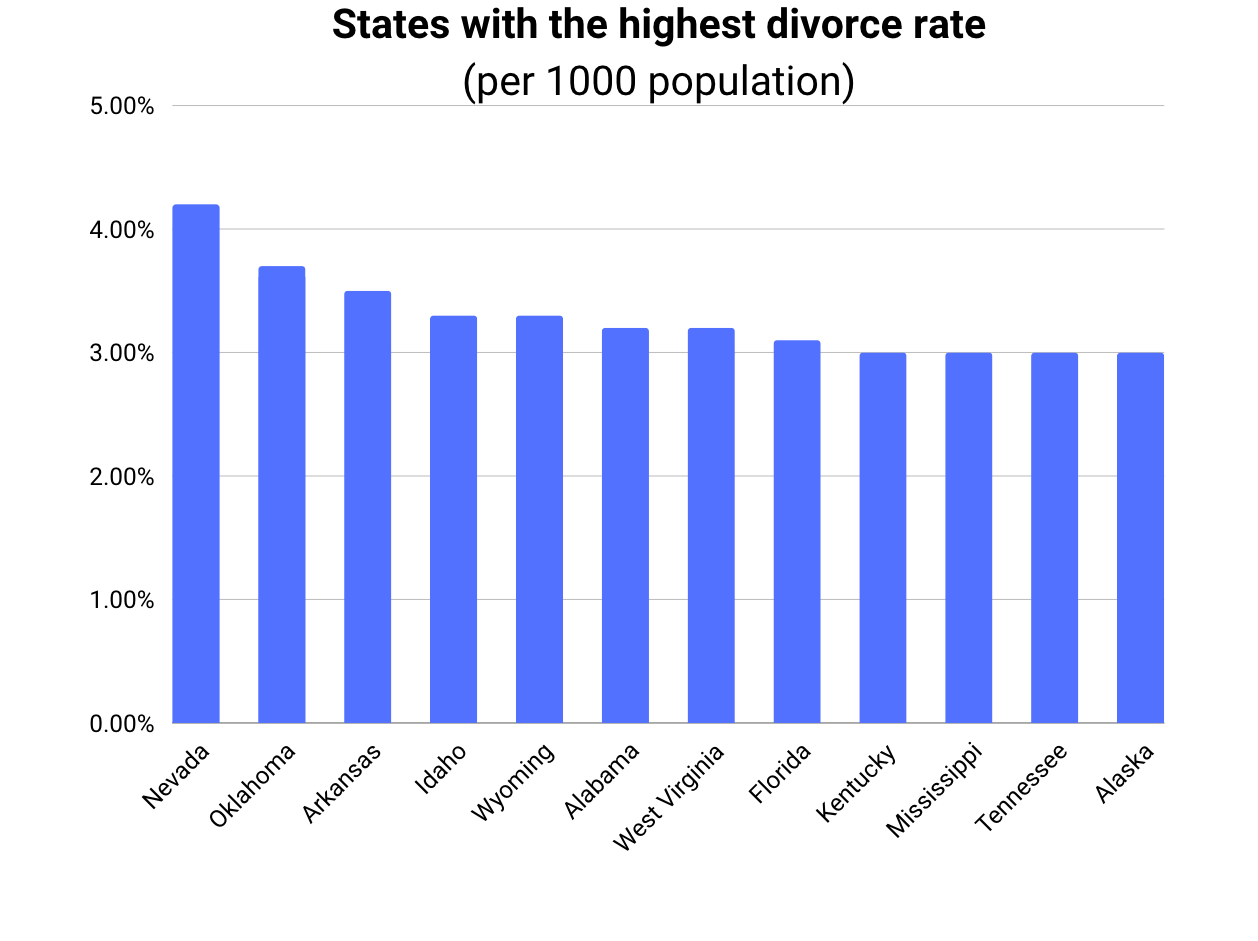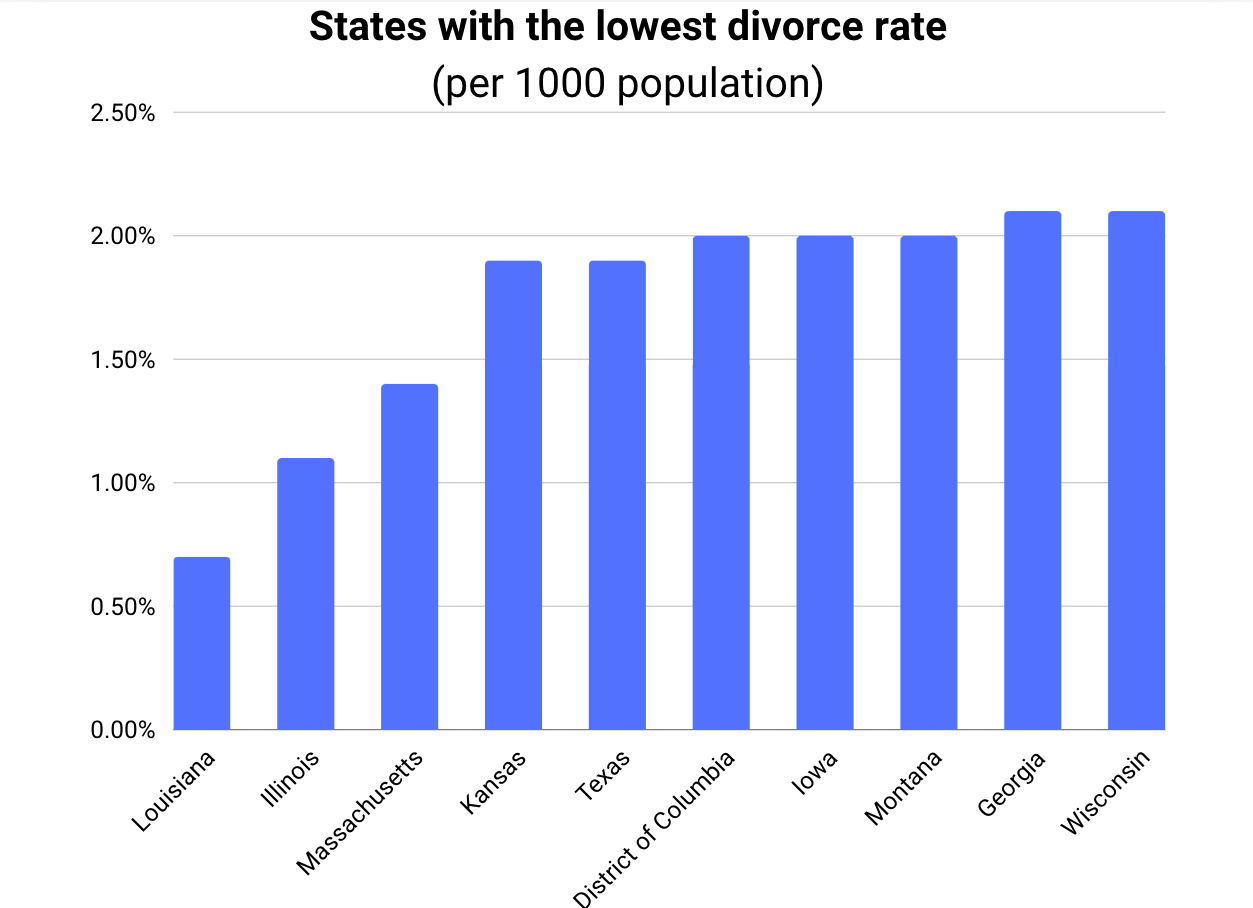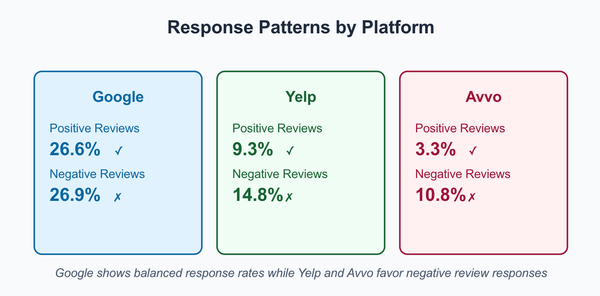USA Divorce Statistics: by year, states and lawyers

This is a list of latest divorce rate statistics in USA.
Is the number of divorces is growing or declining? What States have a higher a growing divorce rate? How many divorces per year usually help to one family lawyer?
In this article, we'll take a closer look at the divorce statistics.
Contents:
- Top Divorce Statistics (Editor's Picks)
- US Divorce Rate Statistics Historical Trend
- US Divorce Rate By State
- Top 10 States with Highest Divorce Rates
- Top 10 States with Lowers Divorce Rates
- Divorces per one Family Law (Divorce) Attorney (by state)
- Family and Divorce lawyers per 1000 population
- Number of Divorce (Family Law) Lawyers by State
- Top 10 Reasons For Divorce
Top Divorce Statistics (Editor's Picks)
- 874,344 males divorces in 2023 (United States Census Bureau)
- 992,677 females divorces in 2023 (United States Census Bureau)
- Average cost of divorce is $15,000
- Average divorce rate is 2.54%
- Divorce rate dropped from 3,6% to 2.54% over the last 10 years
- Most expensive divorce: Bill Gates's divorce in 2021 from Melinda Gates, with Melinda getting $76 billion (Wikipedia)
US Divorce Rate Statistics Historical Trend
The average divorce rate is 2.54%, ranging from 0.7% in Louisiana to 4.2% in Nevada (National Center for Health Statistics)

US Divorce Rate By State
Top 10 States with the Highest Divorce Rates
% of divorces per year per every 1000 population (National Center for Health Statistics)

- Nevada - 4.2%
- Oklahoma - 3.7%
- Arkansas - 3.5%
- Idaho - 3.3%
- Wyoming - 3.3%
- Alabama - 3.2%
- West Virginia - 3.2%
- Florida - 3.1%
- Kentucky - 3%
- Mississippi - 3%
- Tennessee - 3%
- Alaska - 3%
Top 10 States with the Lowest Divorce Rates
% of divorces per year per every 1000 population (National Center for Health Statistics)

- Louisiana - 0.7%
- Illinois - 1.1%
- Massachusetts - 1.4%
- Kansas- 1.9%
- Texas - 1.9%
- District of Columbia- 2%
- Iowa - 2%
- Montana - 2%
- Georgia - 2.1%
- Wisconsin - 2.1%
Divorces per one Family Law Attorney (by state)
The number of divorce lawyers in the U.S. varies by state, making it important to understand potential customers for legal services.
Number of Family Law attorney based on the data from the lawyers listings sites (Avvo.com, Justia.com, LawyersRating.fyi)

Family and Divorce lawyers per 1000 population
Number of Divorce (Family Law) Lawyers by State

- Texas - 10,101
- California - 9,875
- Florida - 7,242
- New-York - 6,657
- Ohio - 5,068
- Illinois - 4,858
- Michigan - 4,614
- Georgia - 4,117
- Pennsylvania - 3,402
- Massachusetts - 3,020
- Maryland - 2857
- Tennessee - 2,765
The top 10 reasons for divorce
- Lack of Communication: Poor communication can lead to misunderstandings and unresolved conflicts, creating distance between partners.
- Infidelity: Extramarital affairs break the trust in a relationship, leading many couples to consider divorce.
- Financial Problems: Disagreements over money management can create significant stress and strain in a marriage.
- Lack of Intimacy: Physical and emotional intimacy is crucial for a healthy relationship; a decline in intimacy can lead to feelings of disconnect.
- Unrealistic Expectations: Couples may enter marriage with expectations that are too high or unrealistic, leading to disappointment when those expectations aren't met.
- Different Life Goals: When partners have differing visions for their future (such as career aspirations or family planning), it can create irreconcilable differences.
- Substance Abuse: Addiction can devastate a marriage, leading to trust issues and significant emotional upheaval.
- Growing Apart: Over time, couples may discover they have grown apart in interests, values, and priorities.
- Domestic Abuse: Any form of abuse—whether emotional, physical, or psychological—can lead to a necessary divorce for safety and well-being.
- Lack of Commitment: If one or both partners are not fully committed to the marriage, it can result in neglect and dissatisfaction.





